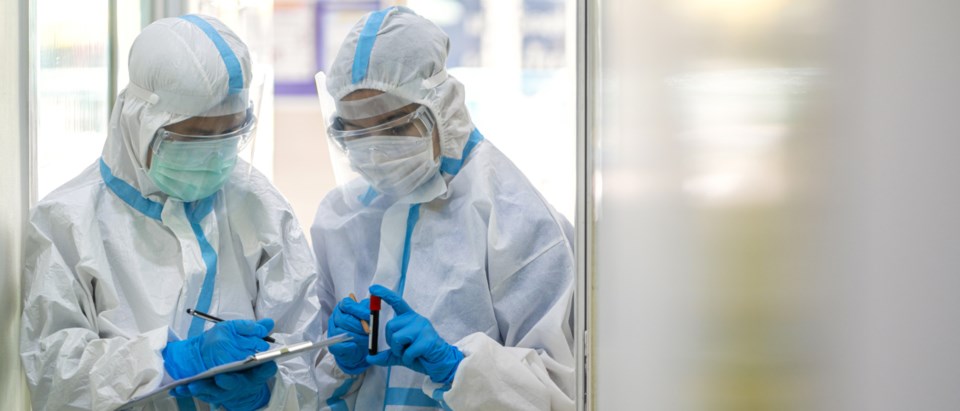The region’s medical officer of health sees a recent report from the province with results of antibody testing in Ontario as evidence COVID-19 control measures are working and need to stay.
Public Health Ontario recently published a report on serosurveillance (checking for antibodies in blood samples) undertaken by provincial labs. The province’s public health agency tested blood specimens that had been submitted to the Public Health Ontario laboratory for other purposes. The specimens were de-identified for blind testing and then underwent serology testing, which is a blood test used to measure antibodies specific to COVID-19.
The testing revealed about one per cent of the samples tested had COVID-19 antibodies. The results were similar in a previous seroprevalence study conducted by Canadian Blood Services on blood donations collected across the nation.
“We now have two studies that suggest about one per cent of our population has developed immunity to COVID-19,” said Dr. Charles Gardner, medical officer of health for Simcoe Muskoka District Health Unit. “For here in Simcoe Muskoka, that would be about ten times the number of cases we’ve picked up with our standard testing.”
Public Health Ontario’s study noted the correlation between a positive antibody test and immunity to COVID-19 is unknown, meaning it’s unclear if a person always produces antibodies after being infected with the coronavirus.
The Ontario testing also indicated higher antibody rates in the southern areas of the province (1.5 per cent) compared to northern and eastern regions (0.3 per cent).
Simcoe Muskoka District Health Unit was included in the Central East region where the seroprevalence rate was about 1.5 per cent.
But, the higher rate in the area is “not surprising” to Dr. Gardner, as he noted the region also includes Peel, York, and Durham where there have been higher rates of COVID-19.
“There are a couple of important takeaways,” he said. “That’s a very low rate of infection. Ninety-nine per cent of people have been spared from being infected.”
Gardner credits provincial control measures and individual efforts to practice physical distancing, self-isolating and monitoring for symptoms, proper handwashing, and wearing masks indoors and in outdoor spaces where physical distancing is compromised.
“This speaks to the effectiveness of the response that’s been taken throughout Ontario to control the spread of COVID-19 … and to the success of everybody’s work together to flatten the curve,” said Gardner. “On the other hand, it also means the great majority of us are still vulnerable to getting this infection.”
The doctor said there could be future waves and control measures need to stay in place.
“We lack immunity to this virus,” he said.
According to the Public Health Ontario study, there are possible inaccuracies including false positives that could be the result of the test measuring antibodies against other human coronaviruses.
A negative result also does not rule out a current or previous COVID-19 infection.
According to the report, it takes 7-14 days to produce a measurable antibody response and some individuals do not produce sufficient antibodies at all.



